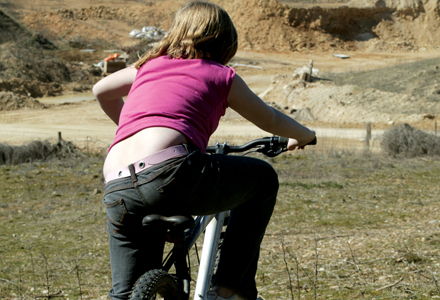
Over the years European quarry operators have vastly improved the safety of their employees and their quarries. However, with the summer school breaks just around the corner, a new problem arises: that of trespassers.
This problem faces many quarries in Europe with disused quarries sometimes posing a particular problem, often because they are unmanned.
In the UK, the quarry industry has launched a safety campaign ahead of the school holidays.
“Every year, young people who venture into quarries unsupervised are killed or seriously injured,” says the
“Last summer, four teenage boys drowned in disused quarries in separate incidents across the UK. All too often, these accidents occur because youngsters do not appreciate the potential hazards involved.”
The MPA, like other organisations across Europe, is determined to keep safety in the spotlight with its annual Stay Safe campaign, which was launched in May to coincide with a public holiday when quarry managers often report an annual surge in quarry trespass by people of all ages.
The campaign will continue over the summer with school presentations and organised quarry visits across the UK.
Stay Safe is supported by the parents of teenagers who have died after entering a quarry uninvited. The teenagers who died were engaged in activities that they and their friends perceived as harmless fun when the fatalities occurred.
“If my son had understood the risk he was taking, he might still be with us today. It’s only through campaigns like Stay Safe that we’ll learn how to protect our kids from danger,” says Tracy Walker, whose 15-year-old son Ryan drowned in a quarry in 2009 while swimming with his friends.
An April 2013 survey by the MPA showed that over half of the quarries and related sites responding experienced problems with trespass in the last year.
The survey also analysed the main motivations for trespass with the most common being theft, usually of cables and fuel, at 55%.
Other reasons included recreational activities such as walking (40%); trail and quad bike riding (23%); swimming (22%); wildlife spotting (15%); and rock climbing (8%).
“It is worrying enough that adults put their own lives on the line,” says MPA chief executive Nigel Jackson.
“But by breaking down fencing and engaging in these activities, they are clearly setting a dangerous example for young people. Through their thoughtless actions, they are potentially exposing young people to the dangers of industrial sites that they then treat as adventure playgrounds.”
The association points out that even very strong swimmers can get into difficulty in the extremely cold or deep water often present in quarry lakes, with the added threat of falling rocks, concealed equipment, unexpected currents and pumps operating beneath the surface, and in some limestone quarries, the alkalinity of the water.
Face edges that can give way suddenly, steep drops concealed by vegetation, falling rocks and silt ponds, that can act like quick sand, create hazards for walkers and climbers.
Unstable terrain and moving plant make quarries unsuitable for trial and quad bikes.
“There are many other places to enjoy recreational activities and a sense of adventure without encountering these hidden and unexpected hazards,” says Jackson.
“I hope that parents, teachers and anyone working with young people can help us get the critical safety message across: please stay safe and stay out of quarries unless you are on a supervised visit.”
A few years ago the MPA drew up an action pack, Tackling Teenage Trespass, which offers advice to quarry managers.
“Whatever level of trespass your site experiences, there are a few basics that need to be in place to protect not just the public, but you as the responsible manager,” it says in the action pack (www.virtualquarry.co.uk).
Among the basics are ensuring work activities do not endanger the health and safety of anyone (not just employees); having a health and safety document with sufficient information to demonstrate that risks have been properly assessed and taking adequate measures to safeguard all persons who might be affected, and ensuring that if a quarry is abandoned or operations have ceased, it is left in a safe condition.
“Maintaining your fences, even under attack from repeated vandalism, is an absolute fundamental in protecting the public. Speedy repairs are equally vital. Fencing itself may not be adequate without signs to make it clear that crossing the fence is not just entering someone else’s property but putting yourself at risk.”





